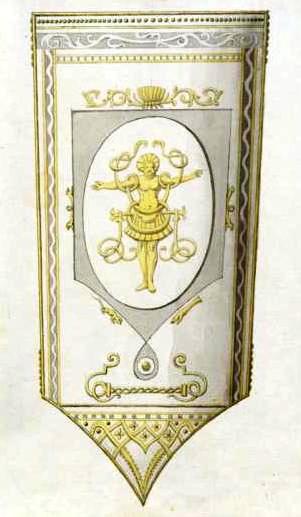Johannes Wiedewelt
(1731-1802)
Illustrations for Johannes Ewald's 'Balders Død'
A sampling of the 72 drawings
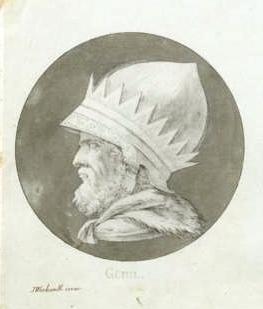 Gorm |
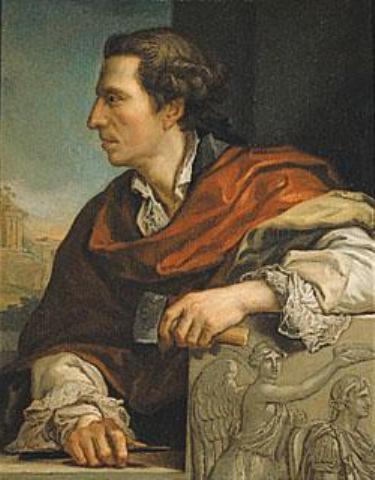 |
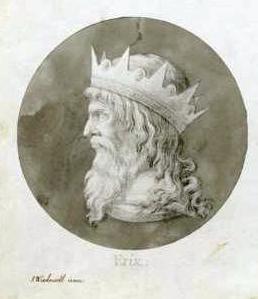 Eric |
[POPULAR RETELLINGS]
|
Wiedewelt was the first Danish artist to
study Nordic prehistory and Antiquities in the Royal Kunstkammer in
order to create a more realistic Nordic environment in his works. In
1794 he exhibited plaster busts of Danish legendary kings. The busts no
longer survive, but the drawings have been preserved, among them a
fantasy portrait of Gorm the Old. Wiedewelt acquired several historical
works for his studies, among them antiquarian Peter Frederik Suhm's
popular work of 1771, Om Odin og den hedniske Gudelære, and Professor
Ole Worm's work on the Danish monuments dating from 1643, it is also
possible that he had access to Stephen Johannis Stephanius' version of
Saxo from 1645. A series of sketches made in the 1780s for the poet
Johannes Ewald's drama 'Balder's Death' is clearly inspired by the
pictures on Harald Bluetooth's large rune stone, which appeared in Ole
Worm's work. [
Source]
"Wiedewelt was among those who created the visual expression to [the]
Nordic trends in the Høegh-Guldberg period, but the ideas had already
surfaced earlier—in those literary circles which had undertaken to
publish the Icelandic manuscripts that Árni Magnússon had donated to the
University of Copenhagen in 1730. In 1760 a foundation was established
for the purpose, but the frequent meetings and systematic publication
was commenced in 1770 under Struensee. Wiedewelt's task was to furnish
frontispieces.
Along with Wiedewelt's actual illustrations
for "Baldur's Death" are a series of single drawings of the gods. There
is Odin with his wolves and ravens, Frigga, Freya, Thor and Freyr on
their chariots, and the Norns with a miserable little Ygdrasil. Some of
these drawings carry a reference to Saxo. [Source] "...More collaborations with literary circles, as well as work on illustrations and vignettes, was to come, and from the 1770s onwards Wiedewelt also amused himself by working on several literary drafts. He wrote humerous texts for musical soirées and parties, mostly parodies with ancient mythological themes. "...In 1773, the poet Johannes Ewald (1743-1781) composed his Saxo-inspired heroic poem Balders Død. It was published in 1775, when also the Danish Literature Society was founded among a circle of Ewald's admirers. Wiedewelt had plans of illustrating it: he made seventy-two watercolored drawings in an album entitled 'Balder's Death in the Year 315'. He aimed at 'a diversity in costume and armour', mixing Nordic peasant clothing with antique elements— for want of better models." — Marjatta Neilsen (2010). |
|||
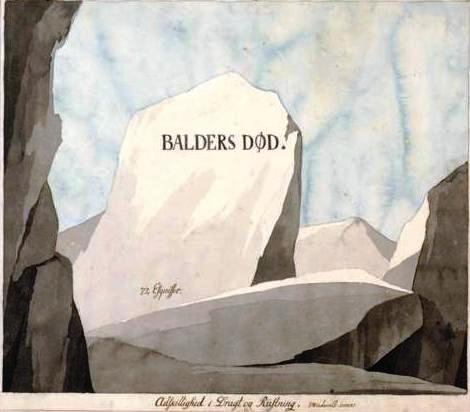 |
 Odin, his wolves called Geri and Freki, and the ravens Hugin and Munin |
||
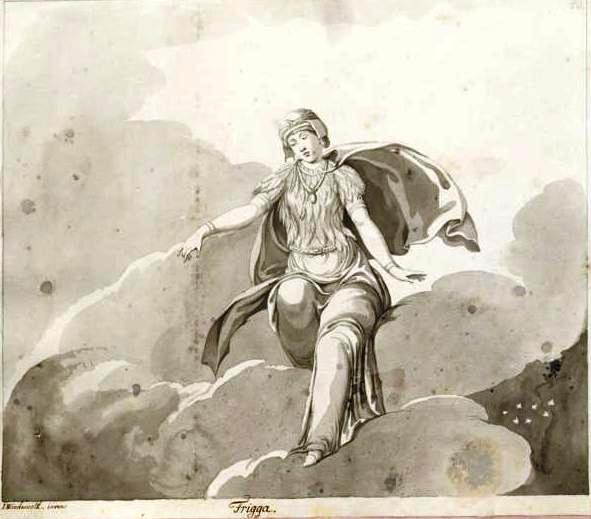 Frigga |
||
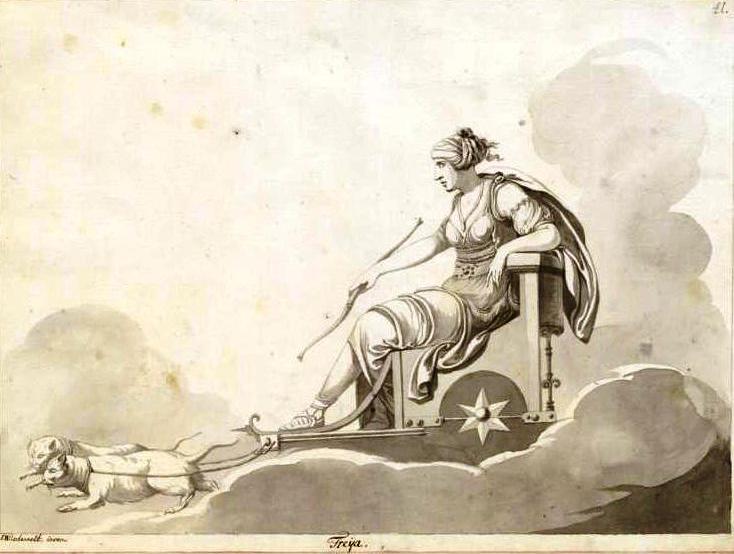 Freya and her car drawn by cats |
||
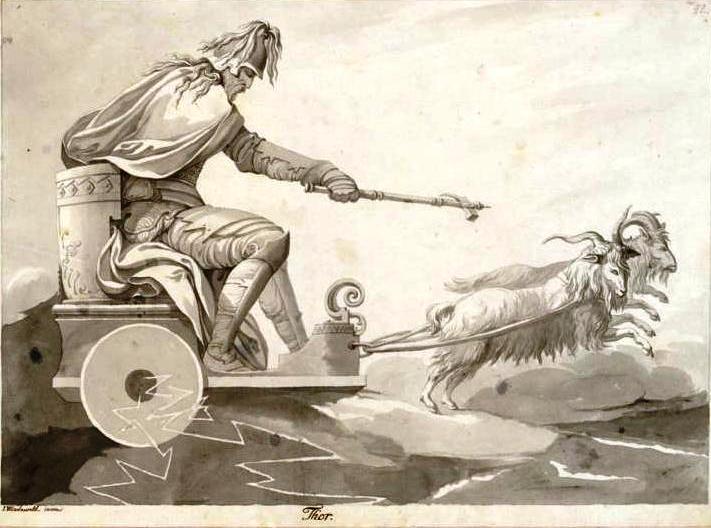 Thor in his Chariot |
||
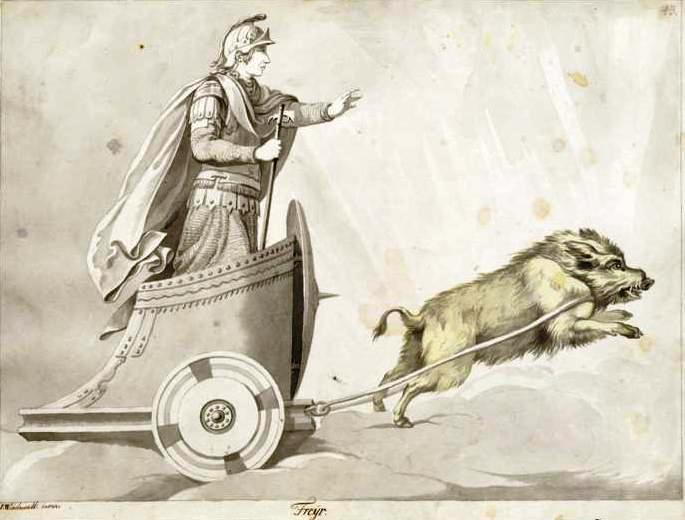 Freyr and Gullinbursti |
||
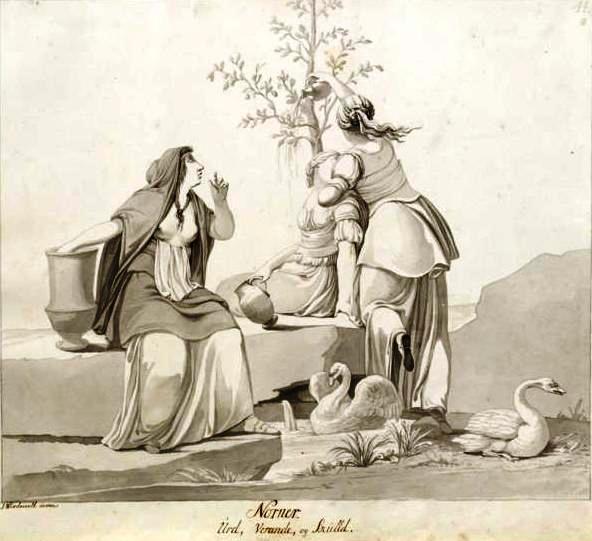 The Norner: Urd, Verdandi and Skuld |
||
 Skadi |
||
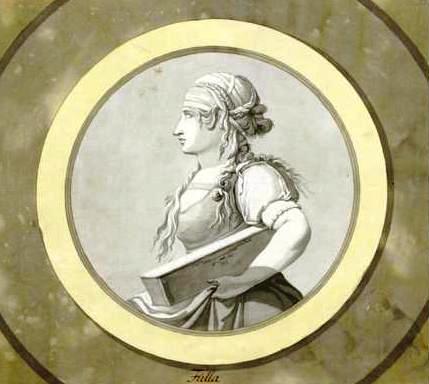 Fulla |
||
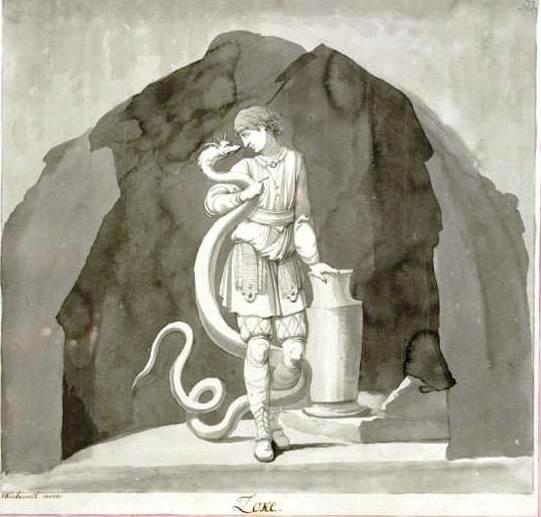 Loki |
||
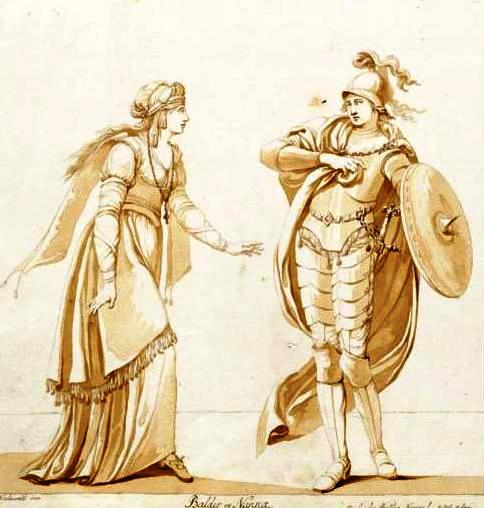 Balder and Nanna |
||
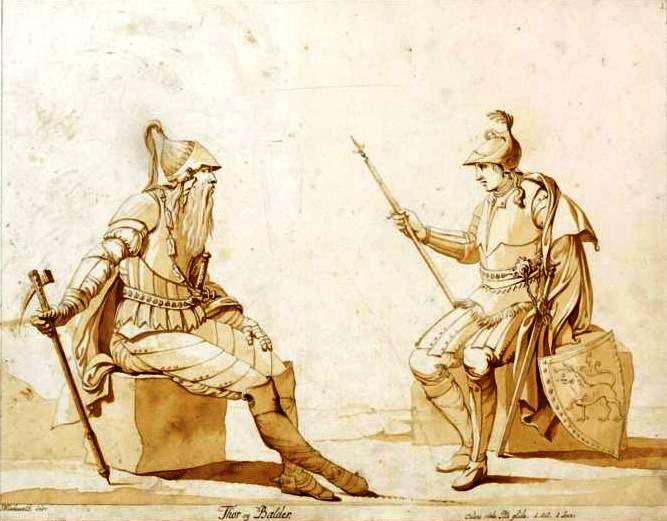 Thor and Balder |
||
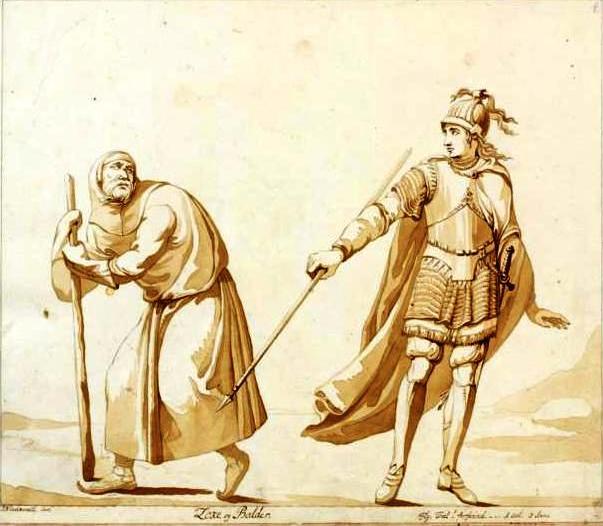 Loki and Balder |
||
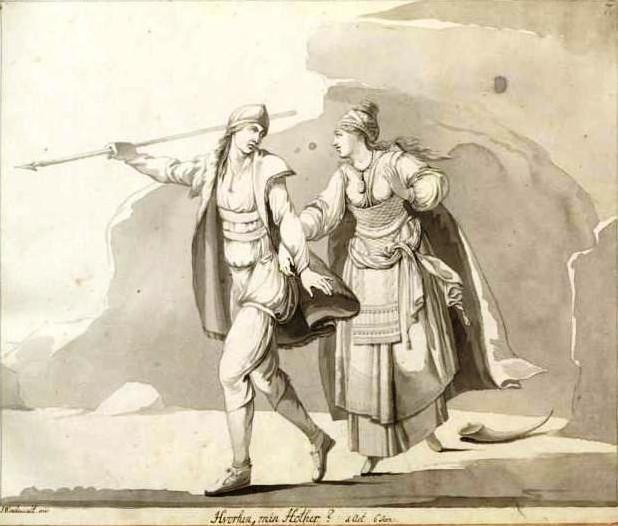 Hodur and Nanna |
||
 The Three Witches in the Wood Saxo Book 3 |
||
 Hodur and the Witches in the Wood Saxo Book 3 |
||
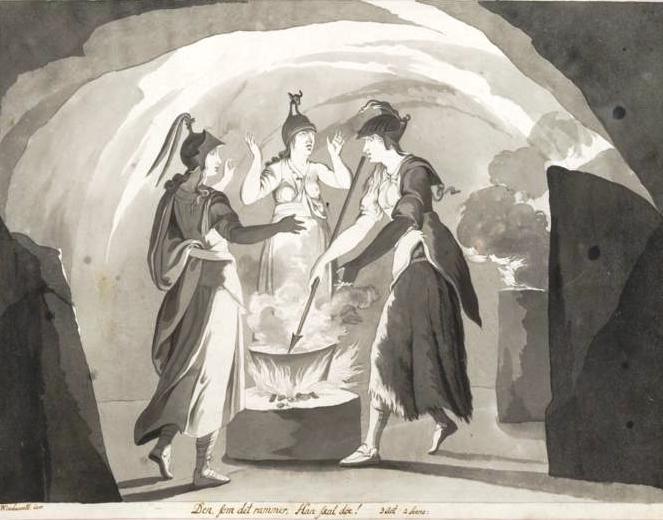 The Three Witches |
||
 Mimmung with the invincible sword and ring of wealth Saxo Book 3 |
||
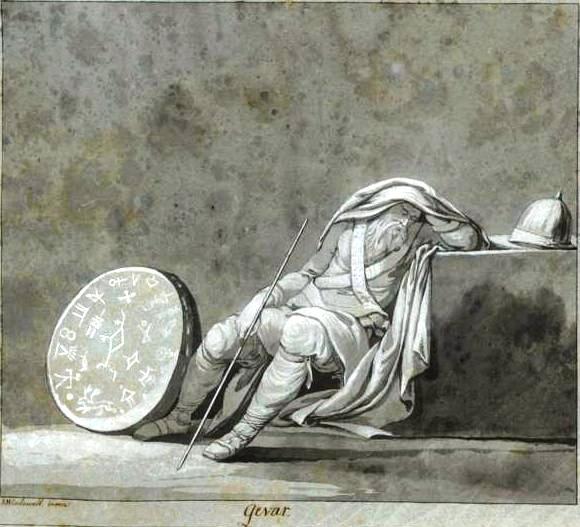 Nanna's Father, Gevar |
||
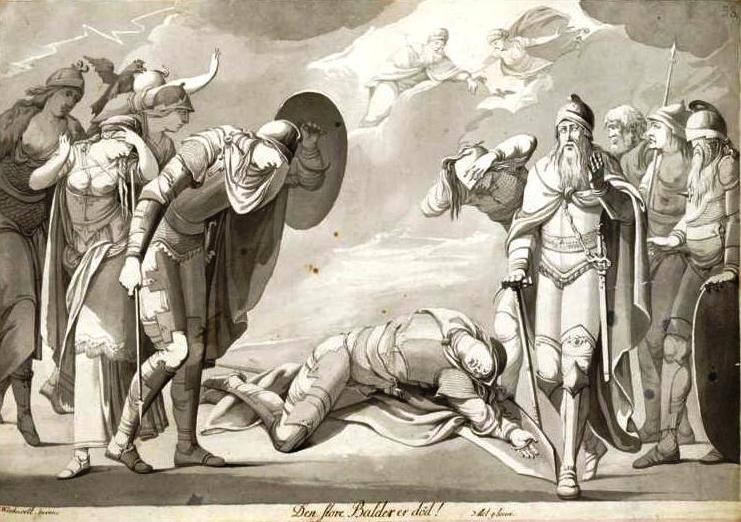 The Great Balder Dead! |
||
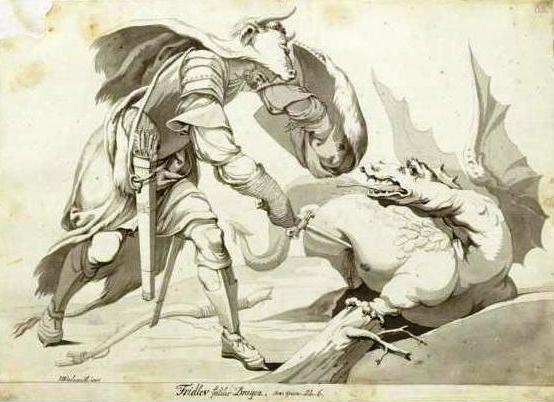 Fridlev kills the Dragon, Saxo Book 6 |
||
|
Danmarks KunstBiblioteks / Denmark's Art
Library holds the following works by this artist: |
||
|
C. 20 "Baldur's Death", 72 Sketches
|
||
[POPULAR RETELLINGS]
